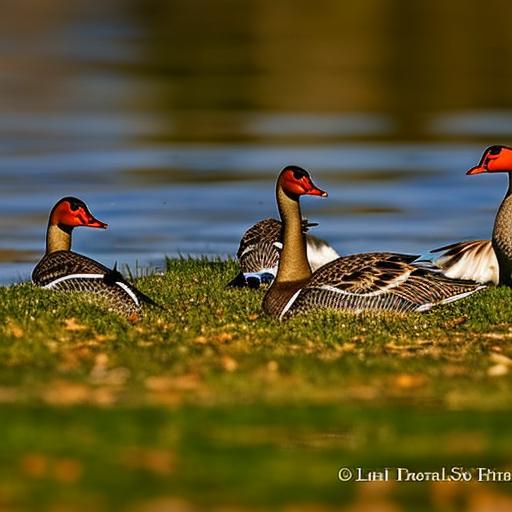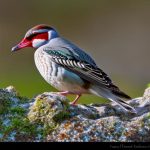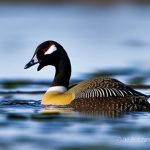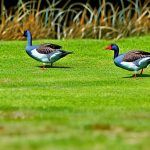Geese infestation is a common problem in many areas, causing damage to property and posing health risks. These birds are attracted to certain areas due to the availability of food and water sources, as well as suitable nesting sites. In order to effectively deter geese, it is important to understand their behavior and implement appropriate methods. This post will discuss various methods that can be used to deter geese, including physical barriers, sound and motion devices, natural deterrents, removing attractive features, establishing a no-feeding policy, using repellent sprays, installing scarecrows or decoys, seeking professional assistance, and maintaining consistency and persistence.
Key Takeaways
- Geese are social animals and will return to areas where they feel safe and comfortable.
- Physical barriers such as fences or netting can prevent geese from accessing certain areas.
- Sound and motion deterrents such as loud noises or moving objects can scare geese away.
- Natural deterrents such as planting certain types of vegetation can make an area less attractive to geese.
- Removing food sources and water features can discourage geese from staying in an area.
Understanding the Behavior of Geese
Geese are attracted to certain areas for several reasons. They are herbivores and are drawn to areas with abundant food sources such as grassy lawns, golf courses, and parks. They also require access to water for drinking and bathing, so areas with ponds or lakes are particularly attractive to them. Geese are social animals and prefer nesting in areas with open spaces and good visibility, such as near bodies of water or on islands.
To effectively deter geese, it is important to understand their nesting and feeding habits. Geese typically nest on the ground near water sources, constructing nests out of grass and other vegetation. They are protective of their nests and can become aggressive if they feel threatened. Geese feed by grazing on grass and other vegetation, often leaving behind droppings that can be unsightly and unsanitary.
Knowing these habits can help in deterring geese. For example, creating barriers around potential nesting sites can discourage geese from settling in those areas. Additionally, removing or reducing the availability of food sources can make an area less attractive to geese.
Implementing Physical Barriers
Physical barriers can be an effective way to deter geese from certain areas. There are several types of physical barriers that can be used, including fences, netting, and hedges. Fences can be installed around areas where geese are not wanted, such as gardens or playgrounds. The fence should be at least three feet high and have small openings to prevent geese from squeezing through.
Netting can be used to cover ponds or other bodies of water to prevent geese from accessing them. The netting should be securely fastened and have small enough holes to prevent geese from getting tangled in it. Hedges can also be used as a barrier, as geese are less likely to land in areas with dense vegetation.
It is important to install and maintain physical barriers effectively. Fences should be checked regularly for any damage or gaps that geese could exploit. Netting should be inspected for any tears or holes that could allow geese to access the water. Hedges should be trimmed regularly to maintain their density and effectiveness as a barrier.
Utilizing Sound and Motion
Sound and motion devices can be used to scare geese away from certain areas. Geese are wary of unfamiliar sounds and movements, so devices that produce loud noises or sudden movements can be effective in deterring them. There are several devices available on the market that can be used for this purpose, including motion-activated sprinklers, ultrasonic devices, and predator decoys.
Motion-activated sprinklers release a burst of water when they detect movement, scaring away geese. Ultrasonic devices emit high-frequency sounds that are unpleasant to geese but not audible to humans. Predator decoys, such as fake owls or coyotes, can also be effective in deterring geese, as they mimic natural predators.
When using sound and motion devices, it is important to vary their placement and timing to prevent geese from becoming accustomed to them. Moving the devices around periodically and changing the timing of their activation can help maintain their effectiveness.
Creating a Natural Deterrent
Natural deterrents can be used to discourage geese from settling in certain areas. Planting certain types of vegetation can make an area less attractive to geese. For example, tall grasses or shrubs can provide cover and make it difficult for geese to see potential predators. Additionally, planting vegetation that geese do not like to eat, such as prickly or thorny plants, can discourage them from feeding in an area.
Predators can also be used as a natural deterrent. For example, placing fake predators, such as plastic coyotes or owls, in an area can make geese think twice about settling there. However, it is important to move the decoys periodically to prevent geese from realizing they are not real.
When using natural deterrents, it is important to choose plants that are suitable for the local climate and soil conditions. Additionally, regular maintenance is necessary to ensure that the vegetation remains effective as a deterrent.
Removing Attractive Features

Removing features that attract geese can help deter them from certain areas. Geese are attracted to areas with open spaces and good visibility, so removing or reducing these features can make an area less attractive to them. For example, removing or trimming low-lying branches on trees can reduce the visibility of an area and make it less appealing to geese.
Additionally, removing or reducing the availability of food sources can discourage geese from settling in an area. This can be done by regularly mowing grassy areas to keep them short and less appealing to geese. It is also important to clean up any spilled birdseed or other food sources that may attract geese.
Establishing a No-Feeding Policy
Feeding geese should be discouraged in order to deter them from certain areas. Feeding geese can create dependence on humans for food and encourage them to stay in an area longer than they would naturally. Additionally, feeding geese can lead to overpopulation and increased aggression.
To establish a no-feeding policy effectively, it is important to educate the public about the negative consequences of feeding geese. Signs can be posted in areas where geese are a problem, reminding people not to feed them. Additionally, enforcement of the policy may be necessary, such as issuing fines for feeding geese in prohibited areas.
Using Repellent Sprays
Repellent sprays can be used to deter geese from certain areas. There are several types of repellent sprays available on the market that are specifically designed to repel geese. These sprays contain ingredients that are unpleasant to geese, such as grape extract or methyl anthranilate.
When using repellent sprays, it is important to follow the instructions on the label and apply them according to the recommended frequency. It is also important to reapply the spray after rain or heavy dew, as it may wash away.
Installing Scarecrows or Decoys
Scarecrows or decoys can be used to scare geese away from certain areas. These devices mimic natural predators and can make geese think twice about settling in an area. Scarecrows can be made from materials such as old clothes stuffed with straw or hay. Decoys can be purchased online or at garden supply stores.
When installing scarecrows or decoys, it is important to place them in areas where geese are likely to land or nest. Moving them periodically can help maintain their effectiveness.
Seeking Professional Assistance
In some cases, it may be necessary to seek professional assistance in deterring geese. Professional wildlife control companies have experience and expertise in dealing with geese infestations and can provide effective solutions. When choosing a professional, it is important to do research and choose a reputable company with a track record of success.
Maintaining Consistency and Persistence
Regardless of the method chosen, it is important to maintain consistency and persistence in deterring geese. Geese are intelligent animals and can quickly adapt to new deterrents. Changing methods frequently or not following through with a chosen method can reduce its effectiveness.
It is important to stay committed to the chosen method and make adjustments as necessary. Regular monitoring and maintenance are necessary to ensure that the chosen method remains effective in deterring geese.
Geese infestation can be a frustrating problem, but there are effective methods for deterring them. Understanding the behavior of geese and implementing appropriate methods can help prevent geese from settling in unwanted areas. Whether it is through physical barriers, sound and motion devices, natural deterrents, removing attractive features, establishing a no-feeding policy, using repellent sprays, installing scarecrows or decoys, seeking professional assistance, or maintaining consistency and persistence, there are solutions available for every situation. It is important to take action and implement the methods that are most suitable for your specific situation in order to effectively deter geese.
If you’re looking for ways to protect your waterfront property or pond from geese, you may also be interested in learning about duck mating season. Understanding when ducks are most likely to breed can help you implement effective strategies to deter geese and maintain a peaceful environment. Check out this informative article on poultrywizard.com to gain insights into duck behavior and how it can impact your efforts to keep geese away.
FAQs
What are some effective ways to keep geese off my waterfront property or pond?
There are several effective ways to keep geese off your waterfront property or pond, including using decoys, installing fencing or netting, using noise deterrents, and planting vegetation that geese dislike.
What are some natural ways to deter geese?
Planting vegetation that geese dislike, such as tall grasses or prickly bushes, can be an effective natural way to deter geese. Additionally, using natural predators such as dogs or hawks can also help keep geese away.
Is it legal to harm or kill geese?
In most cases, it is illegal to harm or kill geese. However, there are some exceptions, such as when geese are causing damage to property or posing a threat to human safety. It is important to check with local laws and regulations before taking any action against geese.
What should I do if geese have already taken up residence on my property?
If geese have already taken up residence on your property, it is important to take action as soon as possible to prevent them from becoming a larger problem. Consider using humane methods such as noise deterrents or planting vegetation that geese dislike to encourage them to move on.
How can I prevent geese from returning to my property?
Preventing geese from returning to your property requires ongoing effort and maintenance. Regularly using deterrents such as noise makers or decoys, maintaining vegetation that geese dislike, and keeping your property clean and free of food sources can all help prevent geese from returning.
Meet Walter, the feathered-friend fanatic of Florida! Nestled in the sunshine state, Walter struts through life with his feathered companions, clucking his way to happiness. With a coop that’s fancier than a five-star hotel, he’s the Don Juan of the chicken world. When he’s not teaching his hens to do the cha-cha, you’ll find him in a heated debate with his prized rooster, Sir Clucks-a-Lot. Walter’s poultry passion is no yolk; he’s the sunny-side-up guy you never knew you needed in your flock of friends!







